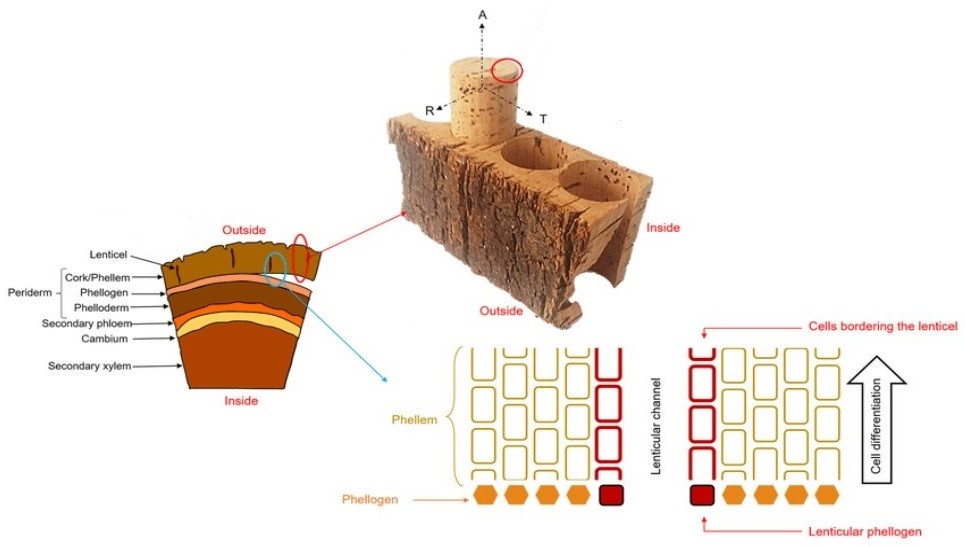
Cellular Structure

(Honeycomb Cork Cell Structure)
The ecological value of cork as a raw material goes without saying, especially when you consider its renewable characteristics, but when it comes to analyzing its’ functional value, you don’t need to look much beyond its cellular structure to get a high-level overview of why it is such an impressive material. Cork’s structure is very similar to that of a honeycomb, with each cubic centimeter containing around 40 million cells (or 200+ million per cubic inch). These cellular pockets are minute, straight-sided pentagonal or hexagonal prisms. The cell height rarely exceeds 0.045 mm, and with that said, the height decreases to between 0.01-0.02 mm in the last cork bark that is formed in the autumn. These cells are filled with a gaseous mixture (like air).
Chemically speaking, the composition of cork is:
- Suberin (approx 45%) is the main component of the cell walls; almost completely impermeable liquids and gases, it is also fire
and insect resistant and unaffected by water; responsible for the resilience of the cork. - Lignin (approx 20%) – the binding compound responsible for cork’s unique structure.
- Polysaccharides (approx 20%) cell components that help define cellular structure.
- Ceroids (approx 5%) – hydrophobic compounds that ensure water imperviousness.
- Tannins (approx 5%) – polyphenolic compounds.
- Remaining compounds (≤ 5%) are normally called extractable and are organic components of cork’s cell walls, although they
are not considered structural compounds of cork.

Representation of the transverse section of cork tree:
Connecting (red arrow) – showing cork stopper plug from bark (letters A, R
and T refers to as the axial, radial and tangential directions, respectively).
Connecting (blue arrow) – showing enlarged section of the phellogen
region with cellular differentiation.

